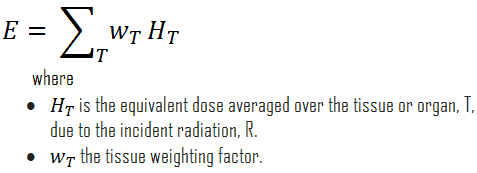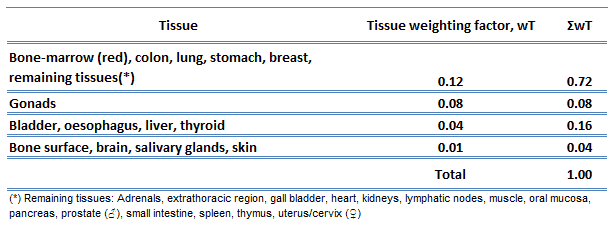The tissue weighting factor, wT, is the factor by which the equivalent dose in a tissue or organ T is weighted to represent the relative contribution of that tissue or organ to the total health detriment resulting from uniform irradiation of the body (ICRP 1991b). It represents a measure of the risk of stochastic effects that might result from exposure to that tissue. The tissue weighting factors consider the varying sensitivity of different organs and tissues to radiation.
Various ICRP (International Commission on Radiological Protection) publications list the tissue weighting factors. According to the actual determination of the ICRP, the risk factors are in the following table (from ICRP publication 103 (ICRP 2007)).
Special Reference: ICRP, 2007. The 2007 Recommendations of the International Commission on Radiological Protection. ICRP Publication 103. Ann. ICRP 37 (2-4).
For this purpose, the body has been divided into 15 different organs – each with a weighting factor wT. If only part of the body is irradiated, then only those regions are used to calculate the effective dose. The tissue weighting factors summate to 1.0 so that if an entire body is radiated with uniformly penetrating external radiation, the effective dose for the entire body is equal to the equivalent dose for the entire body.
If a person is irradiated only partially, the dose will depend strongly on the tissue which was irradiated. For example, a 10 mSv gamma dose to the whole body and a 50 mSv dose to the thyroid is the same, in terms of risk, as a whole-body dose of 10 + 0.04 x 50 = 12 mSv.


